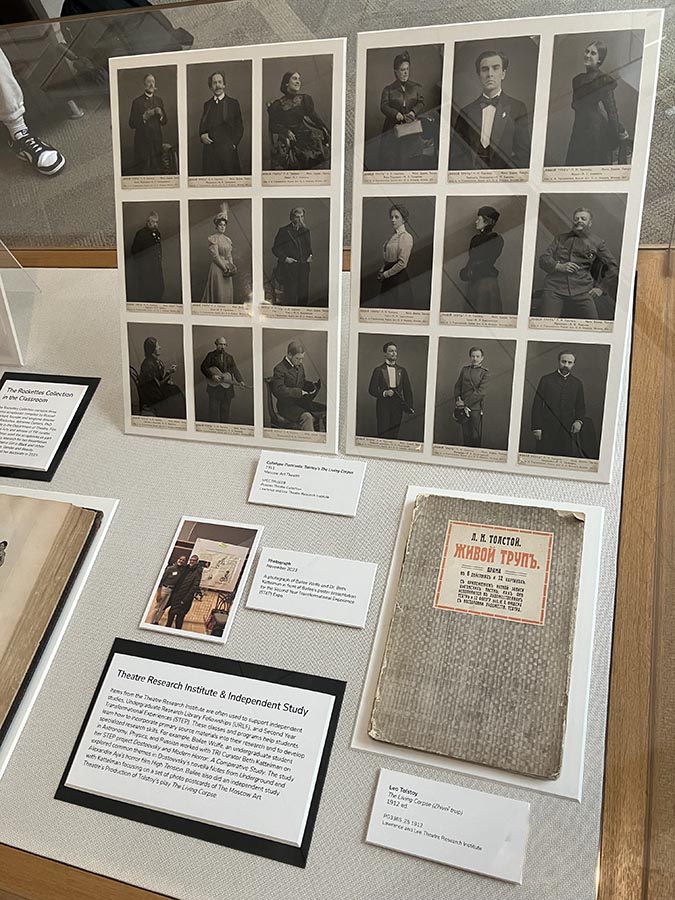In the Special Collections Display area next to the atrium in Thompson Library on The Ohio State University’s Columbus campus, the largest exhibit case (large enough to house four or five mannequins!) is often occupied by items from the Historic Costume and Textiles Collection, “a scholarly and artistic museum resource of apparel and textile material culture housed within the Fashion and Retail Studies Program in the College of Education and Human Ecology.” Curator Gayle Strege selected five ensembles for the Teaching with Special Collections: From Vault to Classroom exhibition, illustrating various ways in which clothing has been integrated into courses.
Of particular interest to students and scholars of the history of the Silk Road, Central Asia, the former Soviet Union, and the Russian Empire, may be the Persian silk jacket (1925) with jade buttons (1920-1970) and pendant (2003), which in January-March 2024 was part of “The Silk Road” exhibit co-curated by Dr. Amanda Respess at Ohio State’s Marion campus.
As the caption explains, “Horses and jade were particularly important trade items (in addition to silk itself) on the early Silk Road, connecting the regions of Central Asia and China. Horseback culture emerged on the Eurasian Steppe and China’s desire for the horses of Ferghana motivated their exploration of the Western Regions. The horseback cultures of Eurasia spread westward to Turkey, bringing with them the design motif of hunting pictured on the jacket.”
Other outfits in the case include a dark blue caftan (1970-79) that belonged to Columbus native and jazz singer Nancy Wilson. This gown was used in the “2021 exhibition Fashion & Music, which was mounted in conjunction with the class, Folk, Funk, Festivals: Music and Fashion (CSFRST 2375)“; a classic Chanel suit (circal 1960s) with “slingback pumps” that has been used in courses on 20th-century fashion, textiles, and branding, and it is featured in Historic Costume’s online gallery, Fashion2Fiber.
You must come and see for yourself the other fashion in the case, e.g., the red, white and blue polyester leisure suit that is used in courses on the history of fashion. Gayle Strege‘s caption indicates that the suit dates to circa 1976, charitably describing it as “very similar to polyester leisure suits of the 1970s, this particular one seems to have been made to celebrate the country’s bicentennial in 1976 given its color scheme.“
If you have the time between now and July 31, 2024, please drop by the exhibition! Exhibit gallery hours during the Spring semester are Monday-Friday 10am-6pm, Saturdays and Sundays 12pm to 6pm; Summer semester hours are Monday-Sunday 11am to 5pm. The exhibit cases next to the atrium – including Historic Costume & Textiles, Architecture and Theatre Research Institute & Independent Study – are accessible whenever Thompson Library is open.









